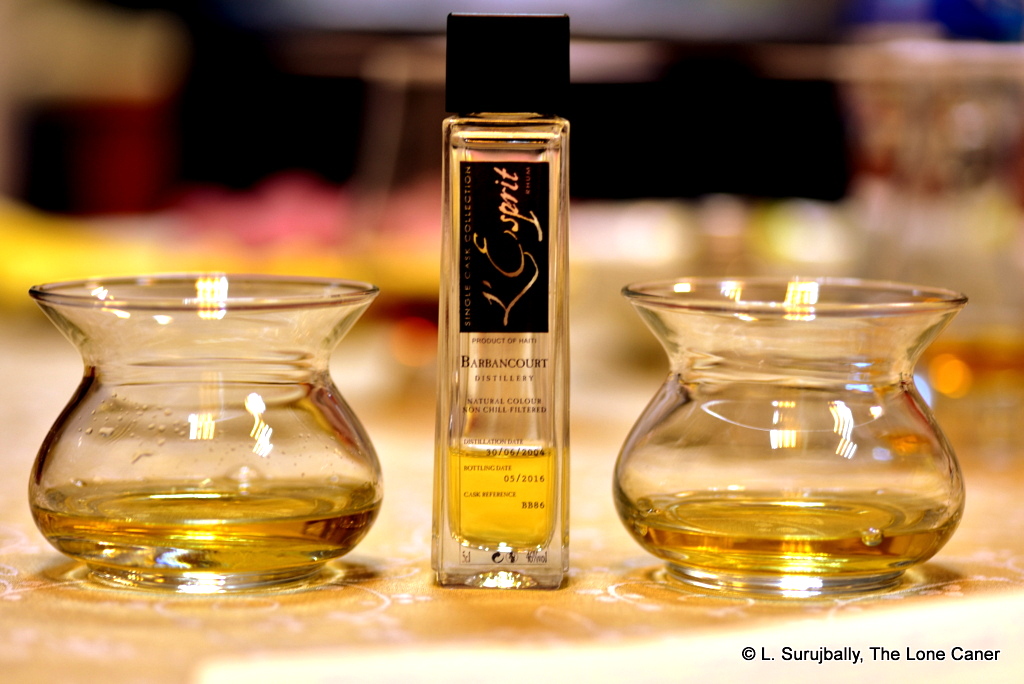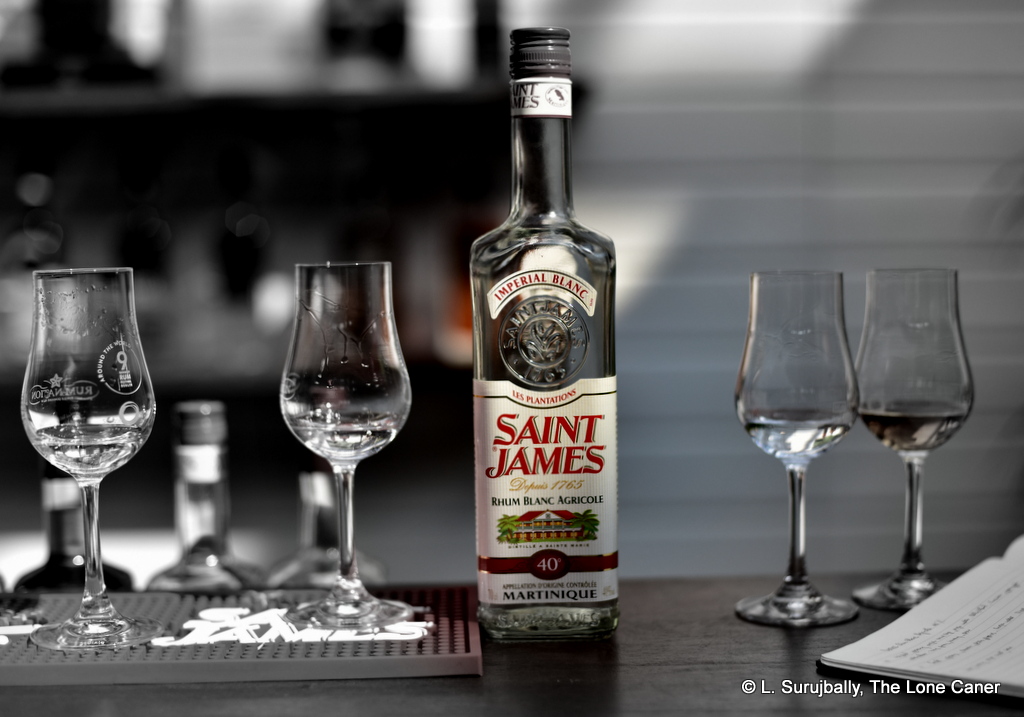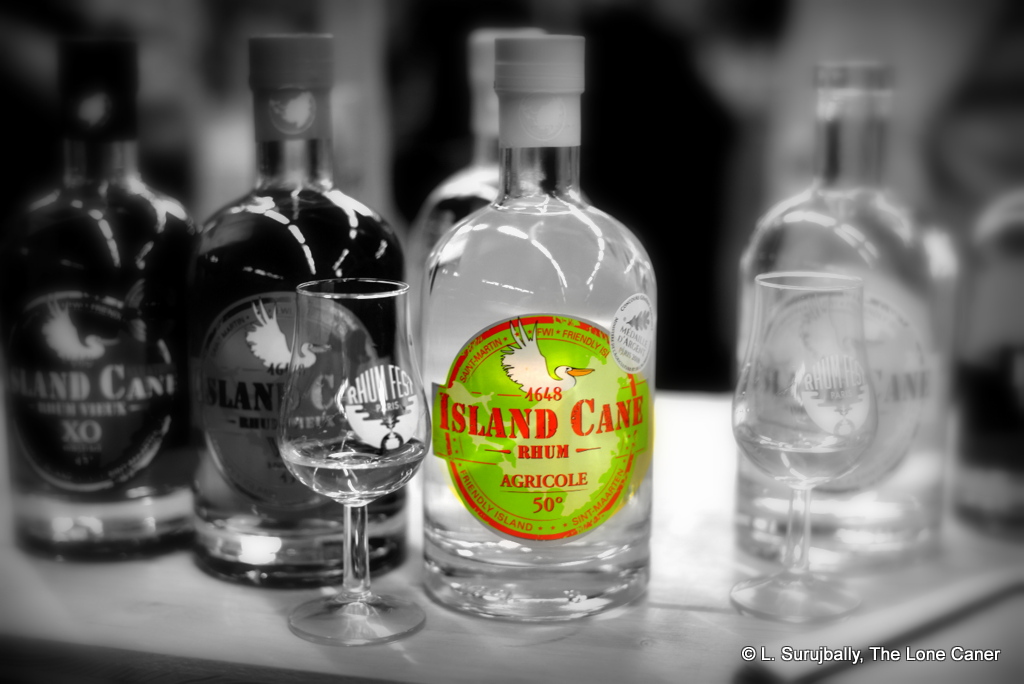Poisson-Père Labat, who worked for the most part with blancs, blends and mid range rhums, came late to the party of millesime expressions – at least, so far as I have been able to establish – and you’d be hard pressed to find any identifiable years’ rhums before 1985. Even now I don’t see the distillery releasing them very often, though of late they seem to be upping their game and have two or three top end single casks on sale right now.
But that has not stopped others from working with the concept, and in 2017 Velier got their mitts on a pair of their barrels. That was the year in which, riding high on the success of the classic Demerara rums, the Trinidadian Caronis and the Habitation Velier series of pot still rums (among others), they celebrated the company’s 70th birthday. Though it should be made clear that this was the company’s birthday, not the 70th year of Luca Gargano’s association with that once-unknown little distributor, since he only bought it in the early 1970s.
 In his book Nomade Tra I Barili Luca – with surprising brevity – describes his search for special barrels from around the world which exemplified his long association with the spirit, sought out and purchased for the “Anniversary Collection”; but concentrates his attention on the “Warren Khong” subset, those rums whose label designs were done by the Singapore painter. There were, however, other rhums in the series, like the Antigua Distillers’ 2012, or the two Neissons, or the Karukera 2008. And this one.
In his book Nomade Tra I Barili Luca – with surprising brevity – describes his search for special barrels from around the world which exemplified his long association with the spirit, sought out and purchased for the “Anniversary Collection”; but concentrates his attention on the “Warren Khong” subset, those rums whose label designs were done by the Singapore painter. There were, however, other rhums in the series, like the Antigua Distillers’ 2012, or the two Neissons, or the Karukera 2008. And this one.
The rhum he selected from Poisson-Pere Labat has all the Velier hallmarks: neat minimalist label with an old map of Marie Galante, slapped onto that distinctive black bottle, with the unique font they have used since the Demeraras. Cane juice derived, 57.5% ABV, coming off a column still in 2010 and aged seven years in oak.
It’s a peculiar rhum on its own, this one, nothing like all the others that the distillery makes for its own brands. And that’s because it actually tastes more like a molasses-based rum of some age, than a true agricole. The initial nose says it all: cream, chocolate, coffee grounds and molasses, mixed with a whiff of damp brown sugar. It is only after this dissipates that we get citrus, fruits, grapes, raisins, prunes, and some of that herbal and grassy whiff which characterizes the true cane juice product. That said I must confess that I really like the balance among all these seemingly discordant elements.
The comedown is with how it tastes, because compared to the bright and vivacious effervescence of the Pere Labat 3 and 8 year old and the younger blends, the Velier 7 YO comes off as rather average. It’s warm and firm, leading in with citrus zest, a trace of molasses, aromatic tobacco, licorice and dark fruits (when was the last time you read that in a cane juice rhum review?), together with the light creaminess of vanilla ice cream. There’s actually less herbal, “green” notes than on the nose, and even the finish has a brief and rather careless “good ‘nuff” vibe to it – medium long, with hints of green tea, lemon zest, some tartness of a lemon meringue pie sprinkled with brown sugar and then poof, it’s over.
 Ultimately, I find it disappointing. Partly that’s because it’s impossible not to walk into any Velier experience without some level of expectations — which is why I’m glad I hid this sample among five others and tried the lot blind; I mean, I mixed up and went through the entire set twice — and Labat’s own rums, cheaper or younger, subtly equated or beat it, and one is just left asking with some bemused bafflement how on earth did that happen?
Ultimately, I find it disappointing. Partly that’s because it’s impossible not to walk into any Velier experience without some level of expectations — which is why I’m glad I hid this sample among five others and tried the lot blind; I mean, I mixed up and went through the entire set twice — and Labat’s own rums, cheaper or younger, subtly equated or beat it, and one is just left asking with some bemused bafflement how on earth did that happen?
But it’s more than just preconceived notions and thwarted expectations, and also the way it presents, samples, tastes. I think they key might be that while the rhum does display an intriguing mix of muskiness and clarity, both at once, it’s not particularly complex or memorable – – and that’s a surprise for a rhum that starts so well, so intriguingly. And consider this also: can you recall it with excitement or fondness? Does it make any of your best ten lists? The rhum does not stand tall in either people’s memories, or in comparison to the regular set of rums Père Labat themselves put out the door. Everyone remembers the Antigua Distillers “Catch of the Day”, or one of the two Neissons, that St. Lucia or Mount Gilboa…but this one? Runt of the litter, I’m afraid. I’ll pass.
(#838)(83/100)
Other Notes
- For those who want more detailed background information, the company biography of Velier and a brief history of Pere Labat are both in the “Makers” section of this website.

















 Still, this 57% ABV grand arôme, which was released in 2016 for La Maison Du Whisky’s 60th Anniversary (they went into partnership with Velier the following year and formed LM&V), seemed at pains to make the point yet again. In this case, it clearly wanted to channel a cachaca duking it out with a DOK, for it nosed pretty much like they were having a serious disagreement: vegetables and oversweet fruits decomposing on a hot day in a market someplace tropical; herbs, wet grass, sweet pickles, hot dog relish (I know what this sounds like!); sugar water; iodine, papaya, strawberries; wax, brine and cucumbers in a light pimento-soaked vinegar. I mean, seriously, does that remind you of any rum you’ve ever tried? I both liked it and wondered where the rum was hiding.
Still, this 57% ABV grand arôme, which was released in 2016 for La Maison Du Whisky’s 60th Anniversary (they went into partnership with Velier the following year and formed LM&V), seemed at pains to make the point yet again. In this case, it clearly wanted to channel a cachaca duking it out with a DOK, for it nosed pretty much like they were having a serious disagreement: vegetables and oversweet fruits decomposing on a hot day in a market someplace tropical; herbs, wet grass, sweet pickles, hot dog relish (I know what this sounds like!); sugar water; iodine, papaya, strawberries; wax, brine and cucumbers in a light pimento-soaked vinegar. I mean, seriously, does that remind you of any rum you’ve ever tried? I both liked it and wondered where the rum was hiding.
 Whatever the case, I must advise you that if you like agricoles at all, those smaller names and lesser known establishments like Dillon should be on your radar. Not all of the rhums they make are double-digit aged, so those that are, even if farmed out to a third party, are even more worth looking at. Just smell this one, for example: it’s a fruitarian’s wet dream. In fact, the aroma almost strikes me like a very good Riesling mixing it up with a 7-up, if you could conceive of such an unlikely pairing. Lighter than the
Whatever the case, I must advise you that if you like agricoles at all, those smaller names and lesser known establishments like Dillon should be on your radar. Not all of the rhums they make are double-digit aged, so those that are, even if farmed out to a third party, are even more worth looking at. Just smell this one, for example: it’s a fruitarian’s wet dream. In fact, the aroma almost strikes me like a very good Riesling mixing it up with a 7-up, if you could conceive of such an unlikely pairing. Lighter than the 
 Depaz’s 45% rhum blanc agricole is not one of these uber-exclusive, limited-edition craft whites that uber-dorks are frothing over. But the quality and taste of even this standard white shows exactly how good the
Depaz’s 45% rhum blanc agricole is not one of these uber-exclusive, limited-edition craft whites that uber-dorks are frothing over. But the quality and taste of even this standard white shows exactly how good the 
 Tasting notes. The nose is nice. At under 50% not too much sharpness, just a good solid heat, redolent of soda, fanta, coca cola and strawberries. There’s a trace of coffee and rye bread, and also a nice fruity background of apples, green grapes, yellow mangoes and kiwi fruit. It develops well and no fault can found with the balance among these disparate elements.
Tasting notes. The nose is nice. At under 50% not too much sharpness, just a good solid heat, redolent of soda, fanta, coca cola and strawberries. There’s a trace of coffee and rye bread, and also a nice fruity background of apples, green grapes, yellow mangoes and kiwi fruit. It develops well and no fault can found with the balance among these disparate elements.

 La Rhumerie de Chamarel, that Mauritius outfit we last saw when I reviewed their 44% pot-still white, doesn’t sit on its laurels with a self satisfied smirk and think it has achieved something. Not at all. In point of fact it has a couple more whites, both cane juice derived and distilled on their
La Rhumerie de Chamarel, that Mauritius outfit we last saw when I reviewed their 44% pot-still white, doesn’t sit on its laurels with a self satisfied smirk and think it has achieved something. Not at all. In point of fact it has a couple more whites, both cane juice derived and distilled on their 
 Personally I have a thing for pot still hooch – they tend to have more oomph, more get-up-and-go, more pizzazz, better tastes. There’s more character in them, and they cheerfully exude a kind of muscular, addled taste-set that is usually entertaining and often off the scale. The Jamaicans and Guyanese have shown what can be done when you take that to the extreme. But on the other side of the world there’s this little number coming off a small column, and I have to say, I liked it even more than its pot still sibling, which may be the extra proof or the still itself, who knows.
Personally I have a thing for pot still hooch – they tend to have more oomph, more get-up-and-go, more pizzazz, better tastes. There’s more character in them, and they cheerfully exude a kind of muscular, addled taste-set that is usually entertaining and often off the scale. The Jamaicans and Guyanese have shown what can be done when you take that to the extreme. But on the other side of the world there’s this little number coming off a small column, and I have to say, I liked it even more than its pot still sibling, which may be the extra proof or the still itself, who knows. 
 Although the plan was always to sell white (unaged) rhum, some was also laid away to age and the aged portion turned into the “Liberation” series in later years. The white was a constant, however, and remains on sale to this day – this orange-labelled edition was 56% ABV and I believe it is always released together with a green-labelled version at 41% ABV for gentler souls. It doesn’t seem to have been marked off by year in any way, and as far as I am aware production methodology remains consistent year in and year out.
Although the plan was always to sell white (unaged) rhum, some was also laid away to age and the aged portion turned into the “Liberation” series in later years. The white was a constant, however, and remains on sale to this day – this orange-labelled edition was 56% ABV and I believe it is always released together with a green-labelled version at 41% ABV for gentler souls. It doesn’t seem to have been marked off by year in any way, and as far as I am aware production methodology remains consistent year in and year out. From the description I’m giving, it’s clear that I like this rhum, a lot. I think it mixes up the raw animal ferocity of a more primitive cane juice rhum with the crisp and clear precision of a Martinique blanc, while just barely holding the damn thing on a leash, and yeah, I enjoyed it immensely. I do however, wonder about its accessibility and acceptance given the price, which is around $90 in the US. It varies around the world and on Rum Auctioneer it averaged out around £70 (crazy, since
From the description I’m giving, it’s clear that I like this rhum, a lot. I think it mixes up the raw animal ferocity of a more primitive cane juice rhum with the crisp and clear precision of a Martinique blanc, while just barely holding the damn thing on a leash, and yeah, I enjoyed it immensely. I do however, wonder about its accessibility and acceptance given the price, which is around $90 in the US. It varies around the world and on Rum Auctioneer it averaged out around £70 (crazy, since  In an ever more competitive market – and that includes French island agricoles – every chance is used to create a niche that can be exploited with first-mover advantages. Some of the agricole makers, I’ve been told, chafe under the strict limitations of the AOC which they privately complain limits their innovation, but I chose to doubt this: not only there some amazing rhums coming out the French West Indies within the appellation, but they are completely free to move outside it (as
In an ever more competitive market – and that includes French island agricoles – every chance is used to create a niche that can be exploited with first-mover advantages. Some of the agricole makers, I’ve been told, chafe under the strict limitations of the AOC which they privately complain limits their innovation, but I chose to doubt this: not only there some amazing rhums coming out the French West Indies within the appellation, but they are completely free to move outside it (as 





 All that comes together in a rhum of uncommonly original aroma and taste. It opens with smells that confirm its provenance as an agricole, and it displays most of the hallmarks of a rhum from the blanc side (herbs, grassiness, crisp citrus and tart fruits)…but that out of the way, evidently feels it is perfectly within its rights to take a screeching ninety degree left turn into the woods. Woody and even meaty notes creep out, which seem completely out of place, yet somehow work. This all combines with salt, rancio, brine, and olives to mix it up some more, but the overall effect is not unpleasant – rather it provides a symphony of undulating aromas that move in and out, no single one ever dominating for long before being elbowed out of the way by another.
All that comes together in a rhum of uncommonly original aroma and taste. It opens with smells that confirm its provenance as an agricole, and it displays most of the hallmarks of a rhum from the blanc side (herbs, grassiness, crisp citrus and tart fruits)…but that out of the way, evidently feels it is perfectly within its rights to take a screeching ninety degree left turn into the woods. Woody and even meaty notes creep out, which seem completely out of place, yet somehow work. This all combines with salt, rancio, brine, and olives to mix it up some more, but the overall effect is not unpleasant – rather it provides a symphony of undulating aromas that move in and out, no single one ever dominating for long before being elbowed out of the way by another.

 I was really and pleasantly surprised by how well it presented, to be honest. For a standard strength rhum, I expected less, but its complexity and changing character eventually won me over. Looking at others’ reviews of rhums in Reimonenq’s range I see similar flip flops of opinion running through them all. Some like one or two, some like that one more than that other one, there are those that are too dry, too sweet, too fruity (with a huge swing of opinion), and the little literature available is a mess of ups and downs.
I was really and pleasantly surprised by how well it presented, to be honest. For a standard strength rhum, I expected less, but its complexity and changing character eventually won me over. Looking at others’ reviews of rhums in Reimonenq’s range I see similar flip flops of opinion running through them all. Some like one or two, some like that one more than that other one, there are those that are too dry, too sweet, too fruity (with a huge swing of opinion), and the little literature available is a mess of ups and downs.

